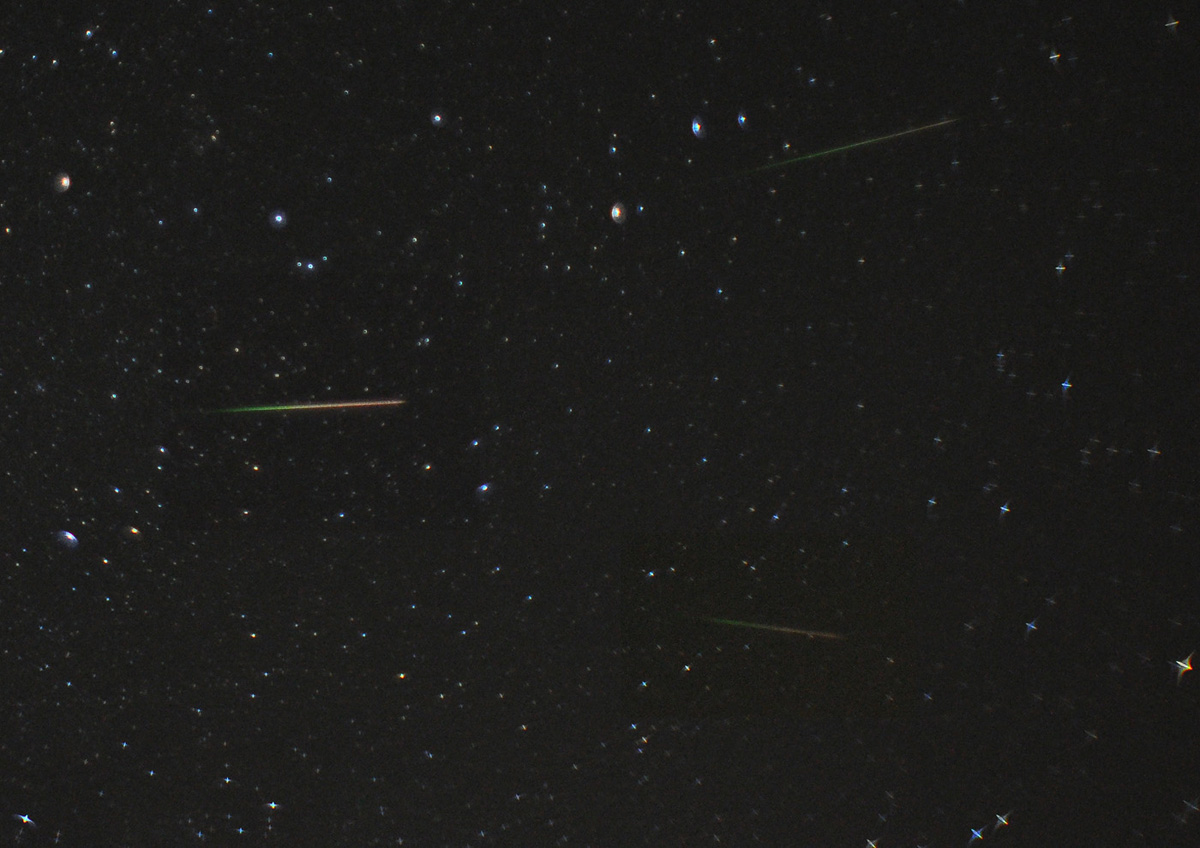
Perseid meteors
Perseid meteors are the debris left by the tail of comet Swift-Tuttle, a periodic comet with an orbital period of about 130 years. Although the comet rounded the sun in 1992, its tail did not deposit material in a location which intersects Earth's orbit and the meteors that we see in modern times are the result of an inner solar system passage of the comet about a thousand years ago. It is possible that at some future time, debris from more recent passages may drift close enough to our orbit to influence the productivity of the shower. In particular, the 1862 passage of Swift-Tuttle did leave a debris filiament in the so-called Perseid Cloud, the stream of particles that is strewn along the comet's orbit, which may enrich the shower from time to time. Although Perseid meteors can be seen for a week or two before and after their peak, they are most prominent on about August 12, between midnight and dawn.
 |
| Images taken August 13, 2013, about 3 am - exposure is 10 seconds on each, ISO set at 1600, lens is the 28mm F:2 with a Vivitar .43 WA converter attached. The final result shown above is a cropped composite of three of the brightest meteors photographed that morning. I actually captured 12 separate tracks out of 1100 photos over a 4 hour period. |
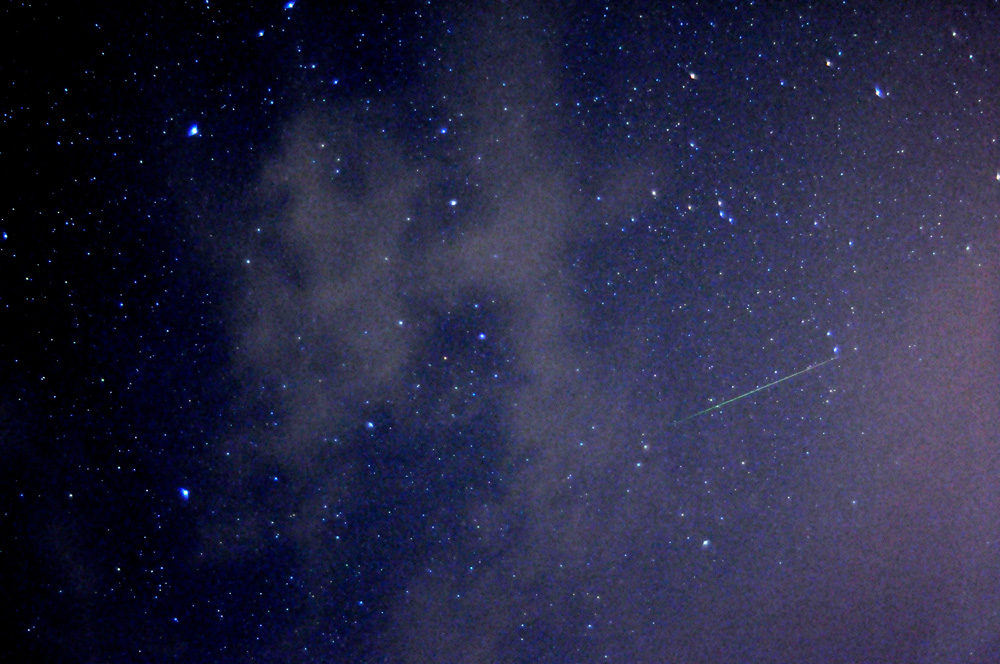 |
| Image taken about 12:30 a.m. on August 12, 2012, with the Nikon D-90 mounted piggyback on the C-5 telescope and using the 28mm F:2 lens. Sky conditions were very marginal with lots of high clouds. Exposure was 10 seconds at ISO 1600, with no noise reduction subtraction. |
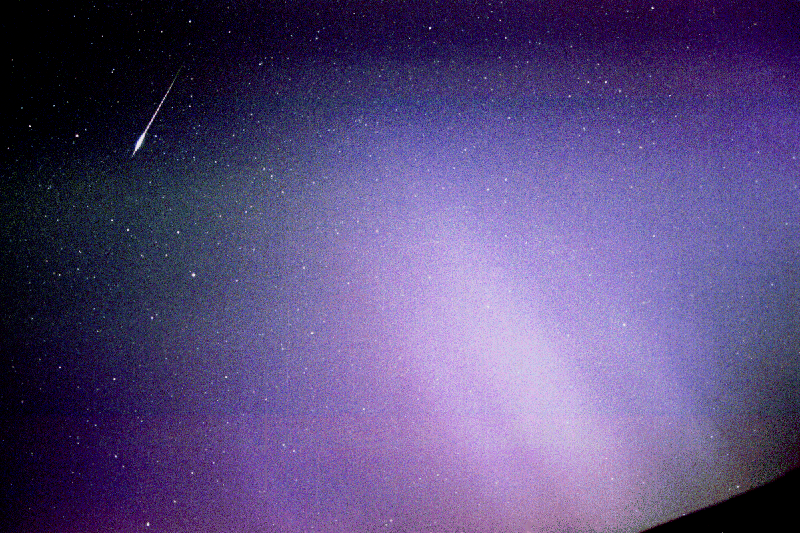 |
Perseid meteor in Ursa Minor with auroral activity, photo taken Aug. 12, 2000, on Kodak Royal Gold 1000 film |
Meteor photos below were taken with my first telescope camera, an SBIG 237, riding piggyback on the C-14 and exposing continously for most of the night in 2001.
 |
Image taken about 10:30 p.m. on August 11, 2001, with the 237 camera mounted on my Nikkor 28mm F:2 camera lens, piggybacked on the C-14 for tracking. Exposure is 30 seconds and the image was processed with Adobe Photoshop and Picture Window. The star in the lower right corner of the image where the end of the meteor track touches is psi Andromeda. |
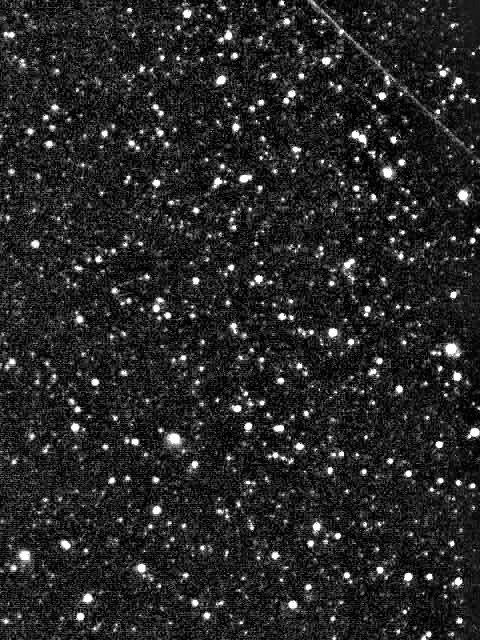 |
Image taken about 11:15 p.m. on August 11, 2001, with the 237 camera mounted on my Nikkor 28mm F:2 camera lens, piggybacked on the C-14 for tracking. Exposure is 30 seconds and the image was processed with Adobe Photoshop and Picture Window. The two stars (brighter ones) just below the lower portion of the meteor track are 25 and 19 Cassiopeia and the bright star left of center in the lower portion of the image is 42 Andromeda. |
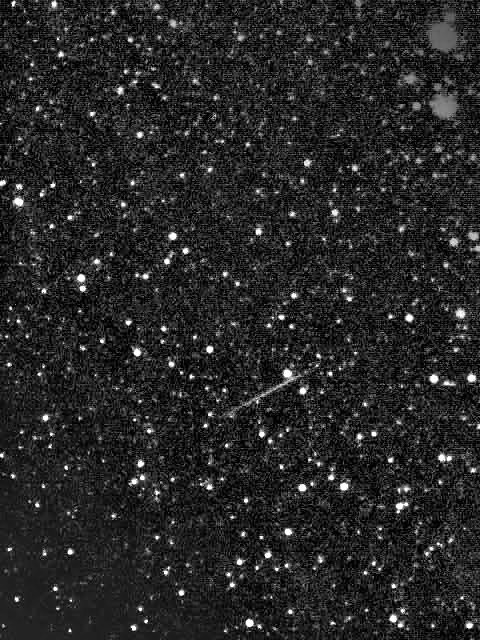 |
Image taken about 3:15 p.m. on August 12, 2001, with the 237 camera mounted on my Nikkor 28mm F:2 camera lens, piggybacked on the C-14 for tracking. Exposure is 30 seconds and the image was processed with Adobe Photoshop and Picture Window. The two bright stars in the upper right corner of the image are 2 and 3 Camelopardalis. The meteors in the above images are moving from left to right but this one is moving from right to left due to the change in position of the radiant between the times they were taken. |